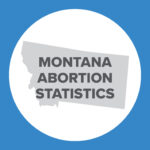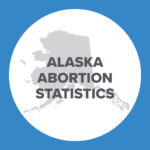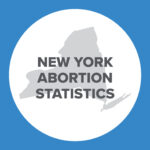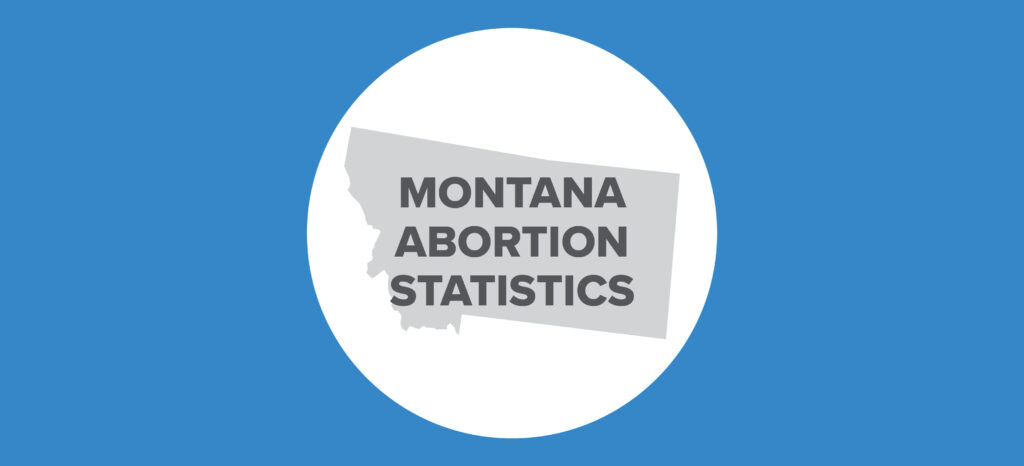Abortion Reporting: Utah (2018)

The Charlotte Lozier Institute’s summary of Utah’s 2019 abortion report is forthcoming.
Utah’s annual abortion report for 2018 was published online by the Utah Department of Health in May 2020. According to the report, both total abortions and abortions performed on Utah residents increased from the previous year.
Changes in Utah Abortions, 2017-2018

*The change in total abortions and chemical abortions reflects abortions performed on Utah residents, while the change in the abortion rate reflects all abortions occurring in the state. The report does not include information on Planned Parenthood’s Utah abortion market share.
Abortion Totals and Trends
In 2018, there were 3,082 abortions reported in Utah, up five percent from the year before (Fig. 1). Of these, 2,895 were performed on Utah residents, also an increase of five percent from the 2,759 resident abortions reported in 2017. Most of the information in Utah’s annual abortion report is for abortions performed in Utah on Utah residents. Forty-one percent of the abortions performed on Utah residents were chemical abortions; chemical abortions increased by more than one percent from the previous year. The Charlotte Lozier Institute estimates that Utah’s abortion rate in 2018 was 4.5 abortions per 1,000 women of childbearing age, up three percent from 2017 (Fig. 2) but still among the lowest rates in the nation.
State Report Summary
In 2018, 94 percent of Utah abortions (2,895 abortions) were performed on Utah residents. Eighty-nine abortions were performed on women from Idaho, while 50 were performed on Wyoming women and 26 on women from Nevada. Seven abortions were obtained by Californians, and the remaining 15 abortions were performed on women from other, unspecified states or territories. The information in Utah’s report is for abortions performed on Utah residents only, and the health department suppresses small numbers between one and four to safeguard privacy.
Of the 2,895 abortions obtained by Utah residents, 13 percent occurred to girls between the ages of 15 and 19, a higher percentage than in many other states, while the number of abortions performed on girls under the age of 15 was suppressed. Thirty-one percent were on women ages 20 to 24 and 25 percent on women ages 25 to 29. Twenty-seven percent of the abortions were performed on women in their thirties, and three percent were on women age 40 or older.
Nearly two-thirds of the abortions were performed on white women. Seventeen percent were on Hispanic women, and six percent were on Asian or Pacific Islander women. Four percent of Utah abortions were on black women. Not quite one percent were performed on Native American women, and one percent were on women of other races. Five percent of the abortions were obtained by women whose races were not reported. CLI estimates that Utah’s abortion rate among non-Hispanic white women was 3.6 abortions per 1,000 women ages 15-44, while the non-Hispanic black abortion rate was 12.6 abortions per 1,000 women.
Over half of Utah abortions (54 percent) were on women with more than 12 years of education. Thirty-one percent were on women with a high school education, and eight percent were on women who had fewer than 12 years of education. Educational status was not reported for seven percent of the women getting abortions. Twenty-eight percent of the abortions were performed on married women, compared to 72 percent on unmarried women. Of all the states that have historically reported the marital status of women undergoing abortions, Utah reports the largest proportion of abortions on married women.
Most Utah residents who obtained abortions, 82 percent, had never had an abortion before, the largest percentage among all states that report this data. Thirteen percent had one previous abortion, and just five percent had two or more prior abortions. Similarly, Utah reported that more than half the abortions (58 percent) were performed on women who had never experienced a live birth. Seventeen percent of Utah abortions were on women with one previous live birth, and 25 percent were on women with more than one previous live birth.
Seventy percent of Utah abortions were performed at eight weeks of gestation or earlier: 14 percent occurred very early in pregnancy before five weeks of gestation, 23 percent were performed between five and six weeks, and 33 percent were performed between seven and eight weeks. Another 14 percent occurred between nine and 10 weeks of gestation. Seven percent were performed between 11 and 12 weeks, and three percent from 13 to 14 weeks of gestation. Five percent were reported from 15 to 20 weeks of gestation, and 1.2% (36 abortions) occurred at 21 weeks of gestation or later.
In 2018, Utah began using an updated abortion reporting form to collect more specific information on the types of chemicals used to induce chemical abortions. However, the annual abortion report combines all chemical abortions into one category, including both early abortions induced with pills and later labor induction abortions. Chemical abortions composed 41 percent of all abortions performed in Utah on Utah residents in 2018. It is likely that most of these were induced using the abortion pills mifepristone and misoprostol, because 98 percent occurred at 10 weeks of gestation or earlier, when this regimen is typically used. Fifty-seven percent of the abortions were surgical curettage procedures, and two percent were performed using unreported methods. No hysterotomy, hysterectomy, or instillation abortions were reported.
The updated abortion reporting form also includes revised questions on contraceptive usage. Rather than recording whether a woman used contraception in the past year and whether the pregnancy resulted from an omission of contraception, as the previous form did, the new form now asks providers to report whether women were using contraception at the time they became pregnant and whether the contraceptives used were highly effective, moderately effective, or least effective. This information is not reported consistently, however, with contraceptive usage unreported for 55 percent of the abortions performed on Utah residents in 2018. Thirty-one percent of the abortions were performed on women who reported using contraception when they became pregnant, and 14 percent were on women who were not using contraception. The effectiveness of the contraception used, if any, was unknown for almost three-quarters of the women getting abortions. Seventeen percent of the abortions were performed on women who were using the least effective methods. Seven percent were on women who used moderately effective methods, and just two percent on women using highly effective contraception. Compared to other states, a large percentage of Utah women at risk of unintended pregnancy use contraception, and a large proportion of those use highly effective methods.
Five abortions had complications reported immediately following the abortions, although the types of complications were not indicated.1 The majority of the abortions had no complications reported. The month of January had the highest number of abortions reported (306), while September had the fewest (194).
Reasons for Abortion
Utah instructs abortion providers to report the reason for the abortion. Previously, Utah’s abortion reporting form offered checkboxes for eight potential reasons: maternal life endangered, therapeutic, fetal malformation, HIV positive, rape, incest, elective, and other. Utah’s update to its form includes the addition of new reasons and the expansion of others.
The new form has an expanded selection for fetal indications, with checkboxes for lethal fetal defects and grave fetal defects and spaces to note the specific condition. The new form also allows abortion providers to record a maternal medical indication, with checkboxes for cardiac disease, renal disease, malignancy, and other. The form has new categories for mental health, drug/radiation exposure, contraceptive failure, and socioeconomic reasons, while the options “HIV positive” and “therapeutic” have been discontinued. As CLI has previously noted, the former “therapeutic” category incorporated abortions performed for “psychiatric” reasons or “emotional distress.”
In 2018, the majority of abortions, 56 percent, were performed for socioeconomic reasons, suggesting that these may also have been included in the obsolete “therapeutic” category. Another thirty-nine percent were elective. Sixty-seven abortions, or two percent, were performed because of fetal malformations, although the report does not indicate what these conditions were. Six abortions were performed because of a risk to the mother’s life, and five were performed due to rape. The numbers of abortions performed because of drug or radiation exposure or the mother’s mental health were suppressed because they were so small. Reasons were not reported for three percent of the abortions. Of the 36 abortions performed at 21 weeks or later, 21 were performed because of fetal malformations, and 13 were for socio-economic reasons. The numbers of late-term elective abortions and those performed for unreported reasons were suppressed.
State Ranking
In 2016, a CLI survey of abortion reporting across the country ranked Utah’s reporting at sixth best. To further improve its reports, Utah could report the gestational ages of abortions after 18 weeks with more specificity, rather than grouping them into large categories. In 2019, Utah passed a law limiting abortion after 18 weeks of gestation, but the law is currently not in effect and a lawsuit is on hold pending the outcome of June Medical Services v. Russo at the Supreme Court. More detailed gestational age reporting would provide relevant information to Utah citizens as they await a decision from the court. Utah could also report on its informed consent and parental consent processes.
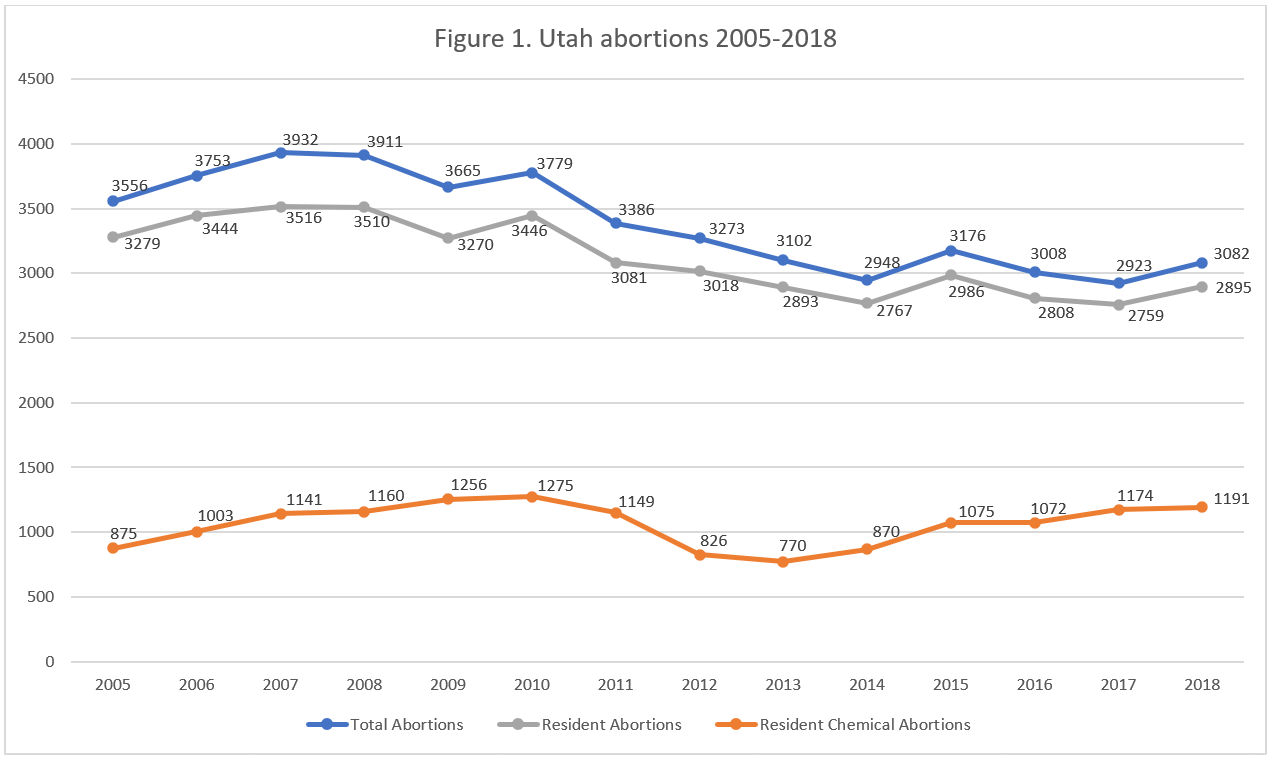
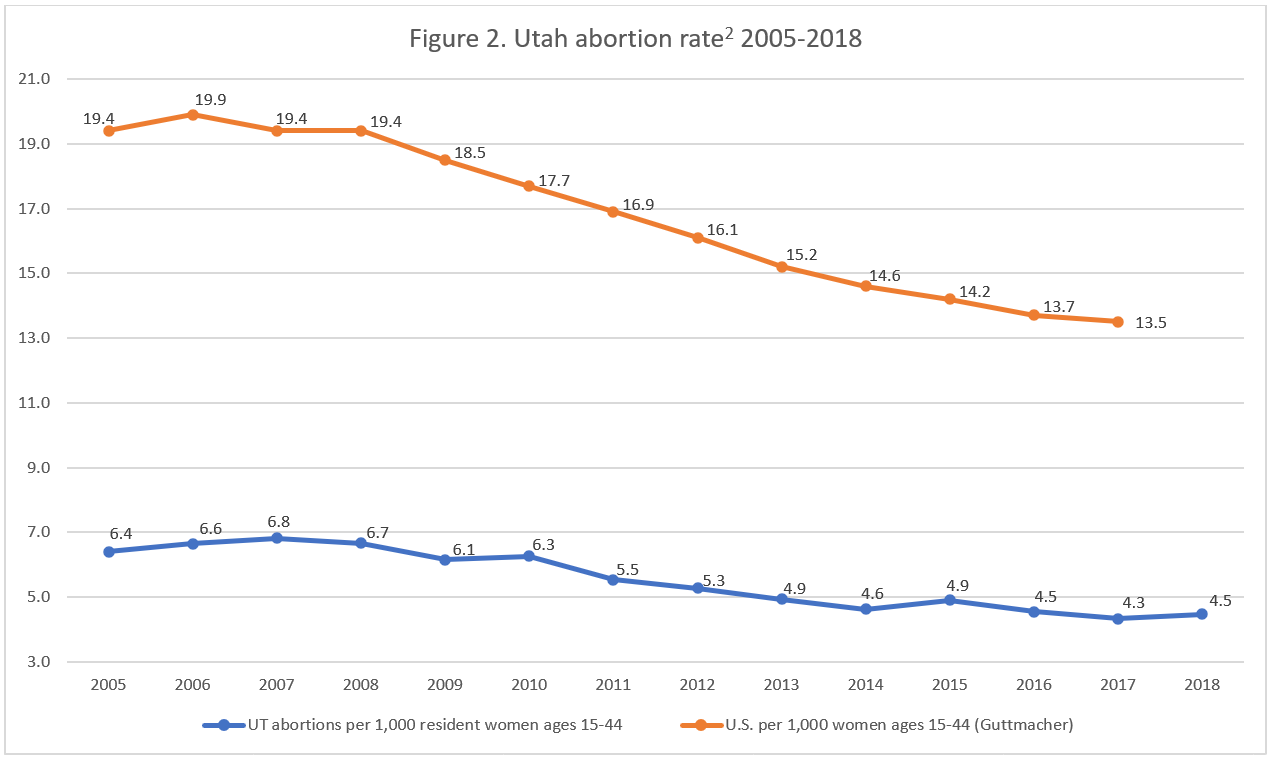
- Statistics on abortion complications reported here represent a minimal number of deaths and complications, as this data is collected in a non-systematic and non-verifiable way. As such, this data cannot be used to calculate either an accurate abortion mortality rate or an accurate abortion complication rate for the state.
- Starting with the 2018 abortion reports, abortion rates are calculated by the Charlotte Lozier Institute to allow for easier state-to-state and year-to-year comparisons. Rates were calculated by CLI using population estimates from the United States Census Bureau. The rates were calculated using the following formula: (total number of abortions performed in Utah ÷ number of resident women ages 15-44) x 1,000. Rates may differ slightly from previous CLI articles due to revised population estimates.










